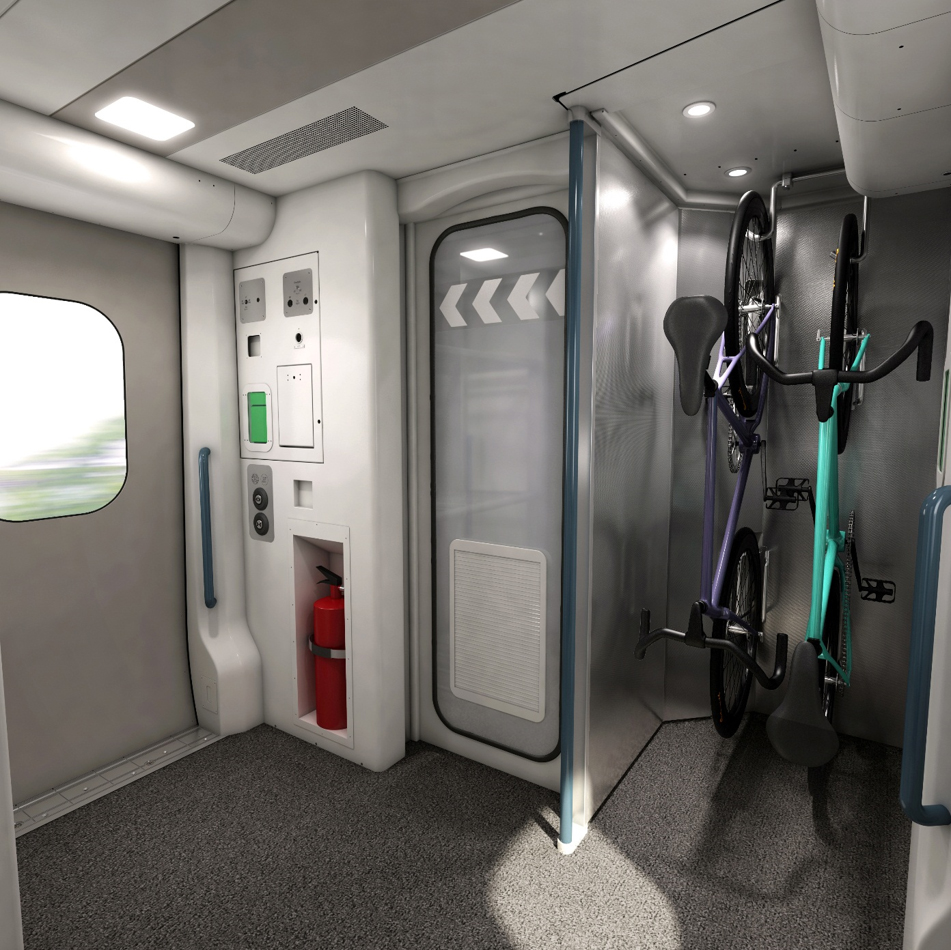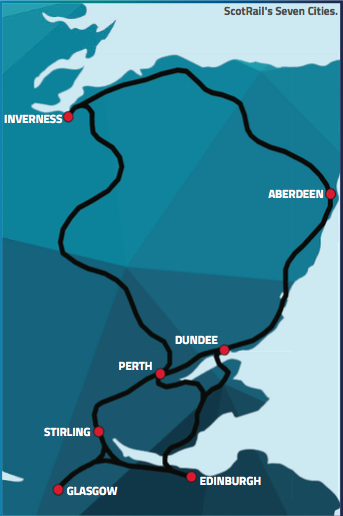In 2012, Transport Scotland published the results of its rail passenger service consultation. This considered how the railway should develop and the types of passenger services required. Its results were incorporated into the specification for the ScotRail franchise which was renewed in 2014.
One conclusion from this consultation exercise was that passengers traveling from central Scotland to Aberdeen and Inverness much preferred to travel in Virgin Trains East Coast High Speed Trains (HSTs) from London than ScotRail’s Class 170 diesel multiple units (DMUs).
For this reason, the invitation to tender (ITT) document for the ScotRail franchise included a specification for improved rolling stock for Scotland’s internal inter-city services that could have been based on the HST’s mark 3 coach. In its franchise bid, Abellio’s response to this requirement was that it would provide refurbished HSTs on the routes that serve Scotland’s seven cities (Glasgow, Edinburgh, Stirling, Perth, Dundee, Aberdeen and Inverness).
ScotRail’s 26 HSTs
The HSTs will be phased into service from summer 2018, with the full fleet operational for the May 2019 timetable change. This aligns with the completion of Network Rail’s Highland main line journey time improvements project. 54 power cars and 121 coaches will be leased from Angel Trains. These will make up 17 five-coach trains and 9 four- coach trains with two power cars spare. The 2019 timetable will require 23 trains in service each day with five coach sets operating Central Belt to Aberdeen services and the four coach trains generally running to Inverness. The number of through services from Inverness to the Central Belt via Aberdeen will also be increased.
ScotRail’s HST project manager Chris Tait commented: “We’re looking to do something special!” – these trains will be transformed after they are released from Great Western Railway (GWR) later this year as the new Hitachi IEP trains are introduced. Brush Traction in Loughborough will work on the power cars whilst the coaches will be transformed by Wabtec in Doncaster, which will review options to undertake a C4 or C6 overhaul whilst they are being refurbished.
To ensure structural integrity of the vehicles up to 2030, a large part of the power car work is the rectification of any corrosion or degradation of glass reinforced plastic cab exterior. Cabs are to be improved with better seats and fitted with forward facing CCTV. The GWR automatic train protection equipment will be left in place, but isolated as it is a part of the speedometer system. A new door interlock emergency override switch will be fitted to allow the driver to stop the train away from any hazards.
Brush Traction will also apply a new livery to the power cars. Although branding of the HSTs is still at the concept stage, it is likely that each power car and coach will feature iconic images of Scotland’s seven cities.
Power-operated doors
There will be four types of coaches. The business-class coach (TFC) will include the train’s catering area and have a self-service bottled drinks and snacks facility for their passengers. Of the types of standard class coaches, one has no special features (TSL), one has two wheelchair spaces and a toilet for persons with reduced mobility (TSD) and one has a rack for two bicycles (TS). Each train can carry eight bicycles, three of which can be carried in a rack in each of the power car’s luggage compartments, although these will only be available for end-to-end journeys.
The new external power-operated sliding doors will be manufactured by Vapor Stone Rail Systems, part of the Wabtec Group in Mexico and USA. Chris advises that the worldwide use of these doors with their simple electric worm drive and over-centre lock has proved to be highly reliable and that their fitment is relatively straightforward. To give train crews consistency of operation, the door controls will be similar to those on the class 170 DMUs.
Coach interiors will be completely revamped with ample luggage space provided. Business class will have leather reclining seats and the new standard class seats will be provided by Grammer. In standard seating areas, the GWR table seat pitch of 1680mm is to be extended to the 1800mm in ScotRail’s class 170 DMUs. Seating will also be better aligned with windows. However, this is not a straightforward requirement, as it became apparent that such alterations would need to be validated by full-scale crash testing.
Further investigation revealed that such crash testing would not be necessary if seat alterations did not change the table-to-seat distance. Hence the solution was 120mm wider tables, although this requires a destructive crush test to confirm the table’s strength.
The coaches are to be fitted with the passenger systems that are currently being fitted to ScotRail DMUs as part of their refurbishment programme. The existing Nomad Wi-Fi system will have new dual element 3G/4G antennas and have a Wi-Fi to shore capability. Infodev is providing the infra-red passenger counting equipment that will download information at key base stations, and R2p the hi-definition CCTV cameras, two of which will be in each coach. These will have a remote download capability with the Wi-Fi system. The centre-saloon dot matrix passenger information system will come from TrainFX.
Modern controlled emission toilets from Semvac will be fitted, providing a significant environmental improvement.
Depot alterations
ScotRail’s HSTs will require significant alterations to depots and servicing points. Moreover, they are not the only new trains coming to Scotland. IEPs will soon be running on the east coast to Aberdeen and Inverness, Caledonian Sleepers are introducing new sleeper trains and new class 385 electric trains will soon be running between Edinburgh and Glasgow.
Chris advised that the respective project teams for these new trains are working well together to ensure that common servicing facilities are compatible for all new rolling stock, for example, by extended hoses and cabling. The most significant item of work is at Haymarket depot where the eastern end of the maintenance shed is to be extended by 39 metres to accommodate five-coach HSTs. The depot is also to get an improved external crane for power car engine changes.
The maintenance of coaches at Haymarket is a first for the depot, which to date has serviced powered vehicles. Hence it needs a shunting vehicle for which alternatives to the class 08 shunter, which was introduced in 1952, are being considered.
In conjunction with IEP works, Inverness depot is being modified to accommodate five-coach HSTs. This includes the provision of extractor fans. The facility at Perth is being upgraded to accommodate four- coach units, as anything longer is currently not possible. There are also, however, long term plans for a new maintenance facility at Perth.
New trains from old
The iconic HST is now over forty years old. It ensured the success of British Rail’s inter-city service and is still the world’s fastest diesel train, although the ScotRail HSTs will have a maximum speed of 100 mph. With around ten million miles on the clock these trains are approaching retirement for long-distance services as they are about to be replaced by IEPs. However, as ScotRail is about to demonstrate with its reincarnation of these trains, there is still much life left in them.
Some might think it odd that a train operator would wish to invest in such old, well-travelled trains. Yet, like the executioner’s axe at the Tower of London with new handles and new blades, their key components have been changed many times over and the work done by Wabtec and Brush will, no doubt, deliver a life-extended, reliable, refurbished train.
This new HST fleet will provide a 33 per cent increase in capacity on Scotland’s internal inter-city network. Their high power-to-weight ratio will deliver the reduction in journey times required by the franchise specification and ensure the severe gradients in the highlands are not a problem. They will be costlier to operate and maintain than current rolling stock. However, their re-vamped mark 3 coaches will generate extra business by giving passengers what they want. This must be good for business and for Scotland’s passenger railway.
Written by David Shirres





